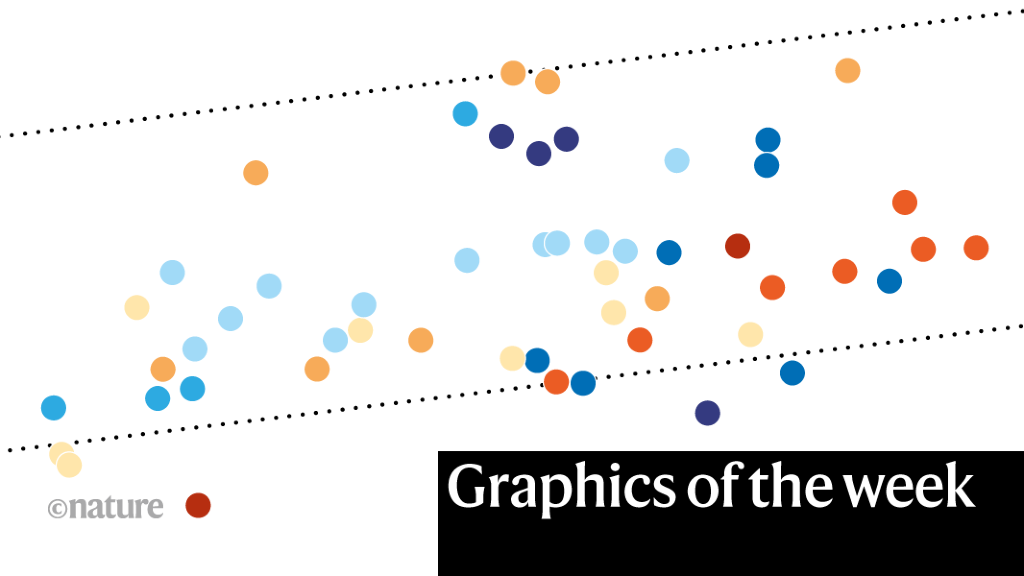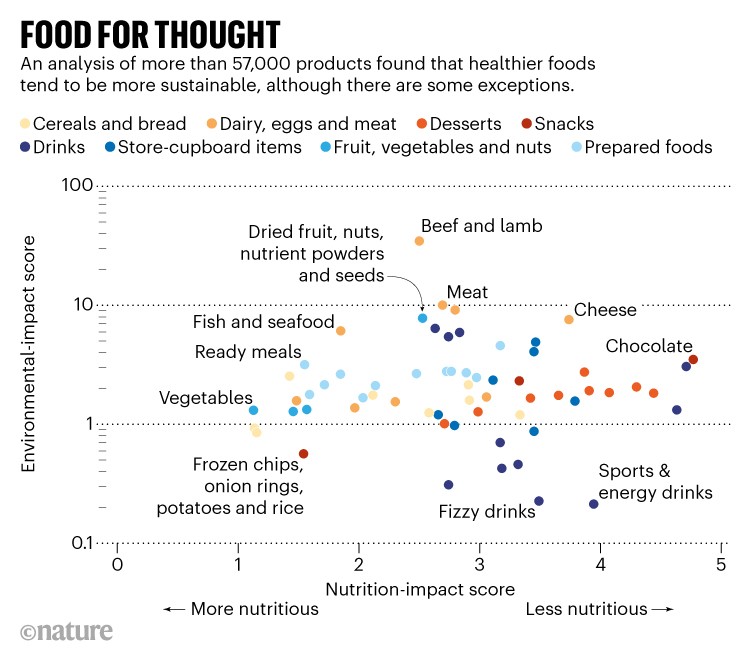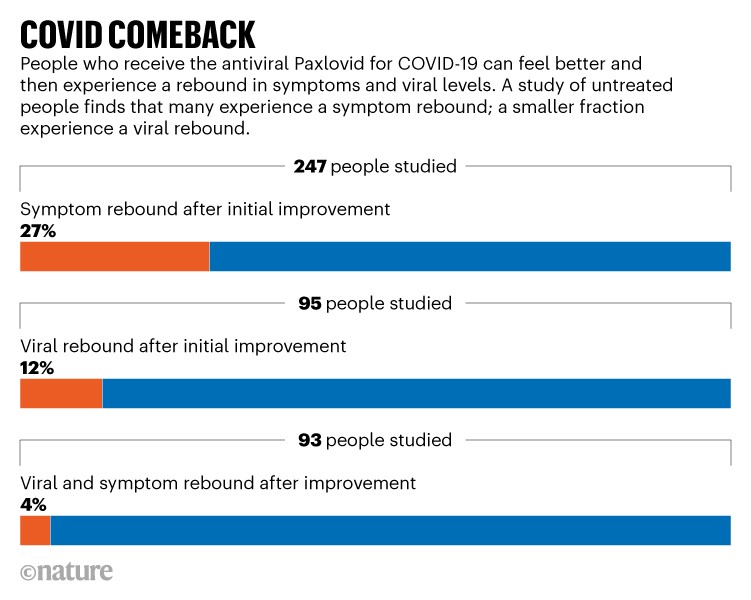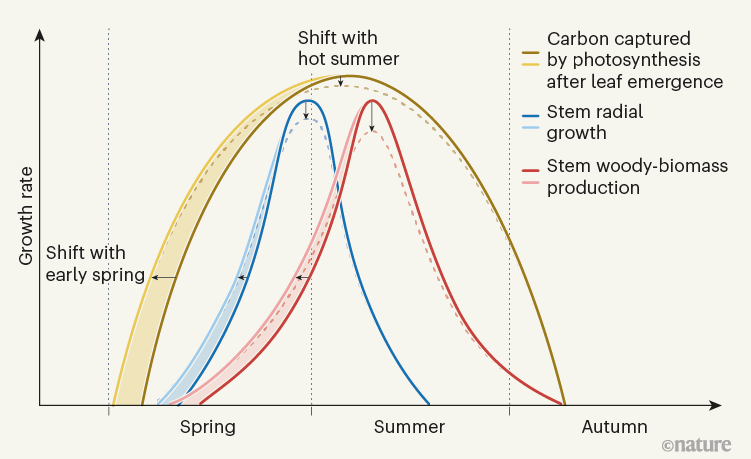Healthy foods are green foods
An analysis of 57,000 foods reveals which have the best and worst environmental impacts. A team of researchers used an algorithm to estimate how much of each ingredient was in thousands of products sold in major UK supermarket chains. The scientists then gave food items an environmental-impact score out of 100 — with 100 being the worst — by combining the impacts of the ingredients in 100 grams of each product. They considered several factors, including greenhouse-gas emissions and land use.
Healthier foods tended to have low environmental impacts, the team found. Products containing lamb and beef — such as ready-made meat pies — had the most serious environmental impact. The lowest-impact foods tended to be made with plants and included bread products, fruits, vegetables, grains and sugar-rich drinks. There were some notable exceptions: both nuts and seafood had a good nutrition score but relatively high environmental impacts.
COVID-19 rebound
After the COVID-19 antiviral Paxlovid began to be used in late 2021, researchers noticed that some people experience a rebound in the virus and symptoms after taking the drug. Two recent studies suggest that it is surprisingly common for SARS-CoV-2 to return in untreated cases of COVID-19 too. To determine the frequency of rebound, Jonathan Li, a physician-scientist at Brigham and Women’s Hospital in Boston, Massachusetts, and his team analysed data from hundreds of people who were randomized to receive a placebo in a large-scale trial of COVID-19 antibody drugs. More than one-quarter of participants who were infected with SARS-CoV-2 reported a rebound in their symptoms, according to the study, which has not yet been peer reviewed. “The main take-home message is that recovery from COVID-19 is not going to be a linear process,” Li says.
How trees grow in a warmer world
This chart shows how the early arrival of spring, due to climate change, affects the growth of trees and the amount of carbon they sequester. In a paper in Nature, researchers investigated the consequences of an early start to the growing season in deciduous forests. Leaf emergence is followed by carbon uptake through the process of photosynthesis. Over time, carbon can be captured for long-term sequestration if it contributes to the radial growth of stems or to wood formation. The areas under the curves represent annual growth in terms of: the amount of carbon captured by leaves (top curves, brown); annual radial growth (lower left curve, blue); and increase in woody biomass (lower right curve, red).
The authors report that the early arrival of spring, which shifts the margins of the growing season (lighter curves), had little impact on the final annual tree-ring width or the amount of woody biomass produced, whereas high temperatures in summer had a negative effect on radial growth (dotted curve). Other studies (plotted here as dotted curves) indicate that high temperatures and related drought can suppress carbon capture and woody-biomass production.
The study provides evidence that warmer springs have advanced the leaf emergence of temperate deciduous forests but have not substantially increased their wood production. This suggests that the extra uptake of carbon dioxide does not contribute to sustainable carbon sequestration in the trunks of long-lived trees, as our News & Views article explains.








More News
Daily briefing: Why exercise is good for us
Daily briefing: Orangutan is first wild animal seen using medicinal plant
Old electric-vehicle batteries can find new purpose — on the grid